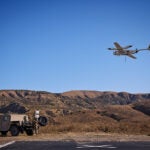
The Pentagon’s task force to protect critical technology projects from China and Russia’s attempts at intellectual property theft is working on new standards to assess supply chain security and data loss measures, the group’s lead officials said Wednesday. Maj. Gen. Thomas Murphy, director of the Protecting Critical Technology Task Force, told attendees at an Association of the United States Army event his group is focused on methods to improve protection of information stored on industry’s unclassified networks, DoD research being…

 By
By 











